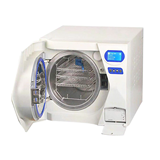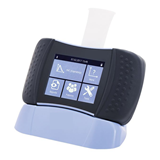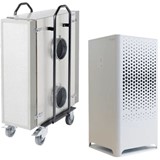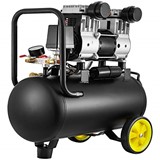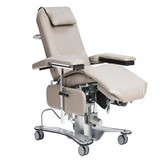Key Takeaways
- Embrace online booking and digital forms. Using a system like HotDoc or AutoMed to automate bookings and send digital new patient forms can cut front-desk admin time and transcription errors by over 30%.
- Automate your recall and reminder system. Stop using manual spreadsheets. Train your team to properly use the recall functions in your PMS (like Best Practice or MedicalDirector) to manage chronic disease and preventative health, saving hours of clinical time.
- Integrate your payments. An integrated EFTPOS terminal (e.g., Tyro) that links directly to your PMS is the single best tool for eliminating keying errors, speeding up checkout, and making end-of-day reconciliation almost instant.
- Master your PMS templates and shortcuts. Invest time in building a central library of templates for everyone (admin and clinical) for referrals, results, and common notes. This ensures consistency and saves time on every patient interaction.
- Ditch the sticky notes. Use the secure task/messaging function within your PMS for all internal communication. This creates a clear, auditable, and medico-legally sound trail of tasks and ensures nothing is ever missed.
Introduction: The admin burden and the burnout crisis
Running an Australian medical practice in late 2025 is a constant battle against the clock. Your clinicians are facing immense pressure to manage complex patient needs, while your admin team is struggling to keep up with a mountain of paperwork, endless phone calls, and complex billing. This administrative burden isn't just inefficient; it's a primary driver of staff burnout and a direct drain on your practice's profitability.
The RACGP's recent "Health of the Nation" reports consistently show that GPs are overworked, with a significant portion of their time consumed by non-clinical administrative tasks. For practice managers, the solution is not just to "work harder" or hire more staff. The key to a sustainable and profitable practice lies in streamlining your administration. This article provides five practical, high-impact strategies to help you automate, delegate, and optimise your workflows, freeing up your entire team to focus on what truly matters: patient care.
1. Automate your front desk with online bookings and digital forms
Your front desk is your practice's air traffic control. If it's chaotic, the entire practice feels it. The most common bottleneck is the telephone, with staff spending hours on repetitive booking calls and manually transcribing new patient information from paper forms.
- The solution: Implement a high-quality Online Booking System (OBS) and Digital New Patient Forms.
- Why it works: Modern patients, especially younger ones, expect the convenience of online booking. This service frees up your phone lines for more urgent and complex patient calls.
- Actionable tip: Use a system that integrates with your PMS to send a secure digital "new patient form" to the patient's phone the moment they book. They fill it out at home, and the data (name, address, Medicare details) is automatically and accurately imported into your PMS. This simple change eliminates 10 minutes of manual data entry, cuts down on transcription errors, and reduces patient waiting time.
2. Systemise your recalls and reminders
One of the most time-consuming administrative tasks, often incorrectly assigned to practice nurses, is managing patient recalls. Manually tracking preventative health checks or chronic disease reviews in a spreadsheet is a significant clinical risk and a massive drain on resources.
- The solution: Leverage the powerful recall and reminder functions built into your Practice Management Software (PMS).
- Why it works: Your PMS is designed to manage this. You can set up automated recalls based on clinical codes, age, or specific conditions. This ensures you meet your accreditation requirements for population health.
- Actionable tip: Train your admin team to manage the recall process. They can run the monthly recall reports, send out the first wave of automated SMS reminders, and manage the follow-up calls for patients who don't book. This frees your practice nurse to focus on the clinical side of chronic disease management, like performing spirometry or assisting with GP Management Plans, rather than just making phone calls.
3. Integrate your billing and payment process
The 10 seconds of manual data entry after every single consultation adds up to hours of lost time and a high risk of error. The "swivel chair" process, where your receptionist takes the fee in the PMS, swivels, and re-keys the exact same amount into the EFTPOS terminal, is a major inefficiency.
- The solution: Invest in an integrated EFTPOS terminal (e.g., Tyro, Medipass).
- Why it works: These terminals connect directly to your PMS. With one click, the bill is pushed to the terminal. The patient pays, and the payment is instantly reconciled in your PMS.
- Key benefits:
- Eliminates keying errors: Prevents costly mistakes where $85.00 is accidentally keyed as $8.50.
- Speeds up checkout: The entire payment and Medicare rebate process is completed in a single, seamless transaction.
- Automates reconciliation: Your end-of-day settlement is automatic, saving your practice manager or admin team 30-60 minutes every single day.
4. Master your PMS templates and shortcuts
How much time do your clinicians and admin staff waste re-typing the same information every day? A referral to a local physiotherapist, a "normal results" notification, or a note about a flu shot campaign, all of this can be templated.
- The solution: Dedicate time to building a comprehensive library of templates and shortcuts in your PMS.
- This is for everyone: This isn't just for doctors.
- Admin Templates: Create templates for common patient enquiries, new patient welcome letters, and responses to results requests.
- Clinical Templates: Build robust templates for common referrals (with the local specialist's details pre-populated), management plans, and mental health care plans.
- The result: This ensures consistency of care (a key RACGP standard), reduces clicks and typing, and significantly speeds up the documentation process for your entire team.
5. Centralise your internal communication (ditch the sticky notes)
A chaotic practice often runs on a disorganised mix of sticky notes, emails, paper messages, and verbal "by-the-way" comments. This is not just inefficient; it's a serious medico-legal risk.
A realistic scenario: The missed task
A doctor scribbles a note for reception to follow up on a patient's missing hospital discharge summary and leaves it on their desk. The note is accidentally thrown out. The information is never chased, the patient's record remains incomplete, and a critical follow-up action is missed.
The solution: Implement a strict policy that all internal communication and tasks must be logged in the secure task management or messaging function of your PMS.
- Why it works:
- It's auditable: The task is linked directly to the patient's file, creating a medico-legally sound record of who was assigned the task and when it was completed.
- It's trackable: Nothing gets lost. A manager can see all outstanding tasks for the practice at a glance.
- It's secure: It protects patient privacy, unlike a physical note or a non-secure email.
This one change creates accountability, ensures follow-ups are completed, and dramatically improves patient safety.
Conclusion
Streamlining your practice administration is the single highest-return investment you can make in your practice's long-term health. By automating repetitive tasks, fully leveraging the technology you already own, and creating standardised, auditable workflows, you achieve multiple goals at once. You reduce the risk of errors, lower staff stress and burnout, create a more efficient and professional patient experience, and, most importantly, free up your valuable clinical team to do what they do best: care for patients.


-160x160-state_article-rel-cat.png)


